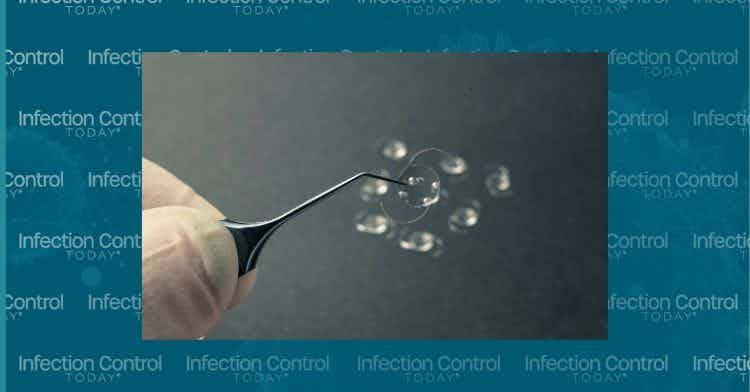FDA, Experts Eye National Postmarket Surveillance
Citing a need to provide better evidence for the risks and benefits of medical devices, a new report, commissioned by the Food and Drug Administration (FDA), outlines a seven-year plan to develop a system for monitoring device performance, the Association for the Advancement of Medical Instrumentation (AAMI) reports.
The report says that access to “reliable and meaningful information about the safety, effectiveness, and quality” of medical devices is fundamental toward the goal of improved patient outcomes. And the authors acknowledge that “concerns about the nation’s ability” to effectively monitor the performance of medical devices are driving the call for a new national system.
The report, Strengthening Patient Care: Building an Effective National Medical Device Surveillance System, is a result of a collaboration between the Engelberg Center for Health Care Reform at the Brookings Institution, a think tank, and the FDA’s Center for Devices and Radiological Health (CDRH). It recommends the creation of a National Medical Device Postmarket Surveillance System (MDS) that puts an emphasis on patient safety.
“A strong postmarket surveillance system can provide more robust and timely benefit-risk profiles for devices so that providers and patients can make better informed healthcare decisions,” says CDRH director Jeff Shuren, MD, and Thomas Gross, MD, director of the CDRH’s Office of Surveillance and Biometrics, in a blog post on the report.
“We need real-world evidence” on the performance of medical devices, says Lewis Sandy, executive vice president of clinical advancement at UnitedHealth Group, during a meeting introducing the report. It is not sufficient to have data from carefully selected patients in clinical trials, he added.
The report is part of ongoing efforts to enhance postmarket surveillance. In 2012, the CDRH released its strategy to improve postmarket surveillance and asked for public feedback. At that time, the agency detailed five steps:
•Establish an MDS planning board.
•Create a unique device identification (UDI) system.
•Develop national and international device registries.
•Modernize adverse event reporting and analysis.
•Develop and use new methods for evidence generation, synthesis, and appraisal.
The agency released its UDI rule to track devices in 2013. In December, Shuren said the agency is moving “full steam ahead” with the UDI system. Indeed, the report makes the assumption that within a decade, unique device identifiers will be collected within electronic health information and that electronic health records, including unique device identifiers, will be widely used across healthcare.
The MDS will have two functions, with a primary emphasis on active safety surveillance based on information collected from electronic sources. One model is a pilot program within the FDA’s Sentinel Initiative-which is intended to keep track of adverse event reports-that focuses on drugs and biologics. A secondary function of the MDS is to work with other organizations, including the National Institutes for Health and the Centers for Medicare & Medicaid Services, to support activities such as product tracking and utilization.
“There is no single stakeholder-public or private-that could build this system on its own,” notes Kathleen Blake, vice president of performance improvement at the American Medical Association, during the event. It will take a range of interested parties-patients, payers, the medical device industry, and clinicians-to make MDS work. These stakeholders will be asked to join a public-private partnership to help implement and manage the MDS.
The plan calls for a two-year incubator project to develop a five-year implementation plan for MDS. The next five years will be devoted to implementing this plan.
AdvaMed, a trade group that represents the medical device industry, expressed strong support for improving the postmarket oversight of medical technologies and diagnostics. “While we are still reviewing the details of the Brookings Institution’s report Strengthening Patient Care, we agree that any MDS should promote optimal patient care by leveraging the input of patients, physicians, industry, and other stakeholders to inform decisions about medical technology safety, effectiveness, and quality in order to promote the public health,” says Janet Trunzo, AdvaMed’s senior executive vice president of technology and regulatory affairs, in an e-mail to AAMI. “Further, we support the central role of the UDI in the establishment of an effective MDS.”
Source: AAMI
The Sterile Processing Conference Survival Guide: How to Make the Most of Your Next Event
March 25th 2025From expert speakers to cutting-edge tools, sterile processing conferences, like the 2025 HSPA Annual Conference and the SoCal SPA's Spring Conference, offer unmatched opportunities to grow your skills, expand your network, and strengthen your department's infection prevention game.
Redefining Material Compatibility in Sterilization: Insights From AAMI TIR17:2024
March 24th 2025AAMI TIR17:2024 provides updated, evidence-based guidance on material compatibility with sterilization modalities. It offers essential insights for medical device design and ensures safety without compromising functionality.
The Latest on CLABSIs and CAUTIs: Evidence-Based Approaches for Infection Prevention
February 27th 2025Health care–associated infections like CLABSIs and CAUTIs threaten patient safety. Learn evidence-based strategies, new technologies, and prevention protocols to reduce these infections and improve outcomes.









